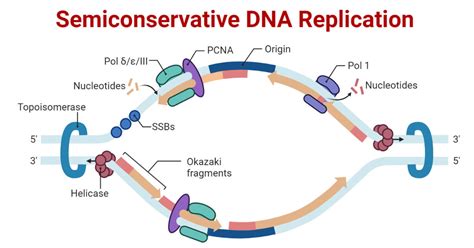define semiconservative replication - conservative vs semi dna replication : 2024-11-01 define semiconservative replicationSemiconservative replication describes the mechanism of DNA replication in all known cells. DNA replication occurs on multiple origins of replication along the DNA template strands. As the DNA double helix is unwound by helicase, replication occurs separately on each template strand in antiparallel directions. This process is known as semi-conservative replication because two copies of the original DNA molecule are produced, each copy conserving (replicating) the information fr. define semiconservative replicationLAS VEGAS (KLAS) — COVID-19 is spreading fast as Clark County’s test positivity rate hits 17.7%, with more than 1,900 new cases reported in data released today. Clark County reported 38 deaths after four consecutive days of no reported deaths. Nevada reported a total of 40 deaths.
See the latest charts and maps of virus hospitalizations, cases, deaths, tests and vaccinations in Clark County, Nevada.
define semiconservative replicationThe DNA replication process is semiconservative, which results in two .Semiconservative replication describes the mechanism of DNA replication in all known cells. DNA replication occurs on multiple origins of replication along the DNA template strands. As the DNA double helix is unwound by helicase, replication occurs separately on each template strand in antiparallel directions. This process is known as semi-conservative replication because two copies of the original DNA molecule are produced, each copy conserving (replicating) the information fr.Learn how Meselson and Stahl tested the semiconservative replication model of DNA using isotope labels and density gradient centrifugation. Compare their experiment . This is known as semiconservative replication. When two DNA copies are formed, they have an identical sequence of nucleotide bases and are divided equally . Evidence for Semi-Conservative Replication of DNA in Prokaryotes. Using isotopically labeled DNA and an isopycnic density gradient centrifugation technique, M. Meselson, and F.W. Stahl . DNA Replication Is Semiconservative. DNA must be fully replicated before cells divide via mitosis to ensure all daughter cells have identical DNA. It was discovered that DNA replication is .Forming a new double strand from each strand of the original DNA molecule is called semiconservative replication. The term "semiconservative" captures the idea that each .define semiconservative replication conservative vs semi dna replication The DNA replication process is semiconservative, which results in two DNA molecules, each having one parental strand of DNA and one newly synthesized strand. The process of replication is semi-conservative, meaning that each of the two DNA molecules formed from the process is made up of one, old, template strand and one newly formed strand. It also forms the . By “semiconservative,” it is meant that the parental DNA subunits are conserved but that they become equally distributed into daughter molecules as .During DNA * replication, double-stranded DNA molecules separate, and the cellular machinery uses each strand as a template for the synthesis of a new strand resulting in the formation of two identical copies of the original double-stranded molecule. Forming a new double strand from each strand of the original DNA molecule is called .Semiconservative Replication. It produces two copies of DNA in such a way that one strand is from the original DNA and the other one is a new strand. Usually, the new strand modifies according to the template .
define semiconservative replicationThe meaning of SEMICONSERVATIVE is relating to or being genetic replication in which a double-stranded molecule of nucleic acid separates into two single strands each of which serves as a template for the formation of a complementary strand that together with the template forms a complete molecule.DNA Replication, Repair, and Mutagenesis. N.V. BHAGAVAN, in Medical Biochemistry (Fourth Edition), 2002 Semiconservative Replication. The information in each strand of the double helix serves as the template for the construction of a new double-helical DNA molecule; this is called semiconservative replication since one old strand of DNA is .Revision notes on 1.5.7 Semi-Conservative Replication for the AQA A Level Biology syllabus, written by the Biology experts at Save My Exams. semiconservative replication : Definition: Search for: Biology Glossary search by EverythingBio.com : The mode by which DNA replicates. Each strand acts as a template for a new double helix. The established model of DNA replication in which each double-stranded molecule is composed of one parental strand and one newly .Semiconservative replication is the process by which DNA is copied during cell division, where each new DNA molecule consists of one original strand and one newly synthesized strand. This method ensures that genetic information is accurately passed on to daughter cells, maintaining the integrity of the genetic code. It is a fundamental aspect of DNA . In one model, semiconservative replication, the two strands of the double helix separate during DNA replication, and each strand serves as a template from which the new complementary strand is copied; after replication, each double-stranded DNA includes one parental or “old” strand and one “new” strand. There were two competing . In all kingdoms of life, DNA is used to encode hereditary information. Propagation of the genetic material between generations requires timely and accurate duplication of DNA by semiconservative replication prior to cell division to ensure each daughter cell receives the full complement of chromosomes.DNA synthesis of daughter .Models of Replication. There were three models of replication possible from such a scheme: conservative, semi-conservative, and dispersive. In conservative replication, the two original DNA strands, known as the parental strands, would re-basepair with each other after being used as templates to synthesize new strands; and the two newly-synthesized .

DNA replication is a semiconservative process, meaning that for every new pair there is one original strand and one new strand. Initiation. The origin of replication is a sequence of base pairs in the genome where DNA replication begins; these sequences tend to be high in AT content making for easier separation. AT bonds have the fewest .
Experience a luxury Las Vegas hotel and casino along The Strip and explore the unexpected. At The Cosmopolitan of Las Vegas, the possibilities are endless.
define semiconservative replication